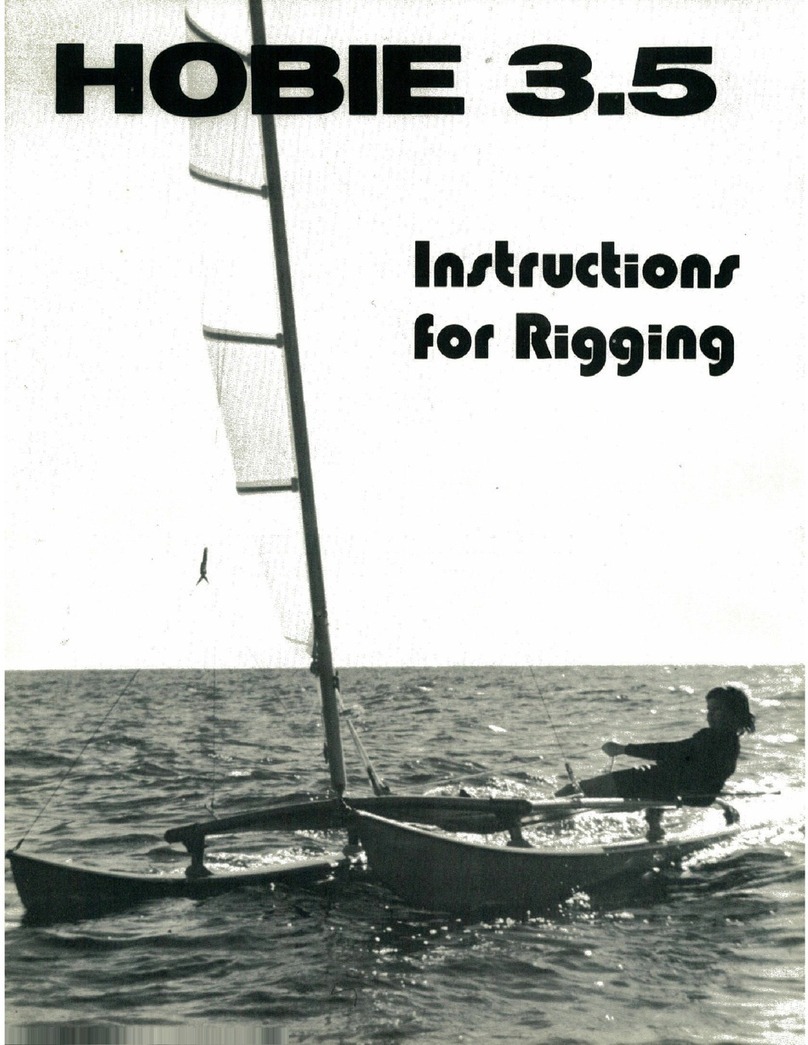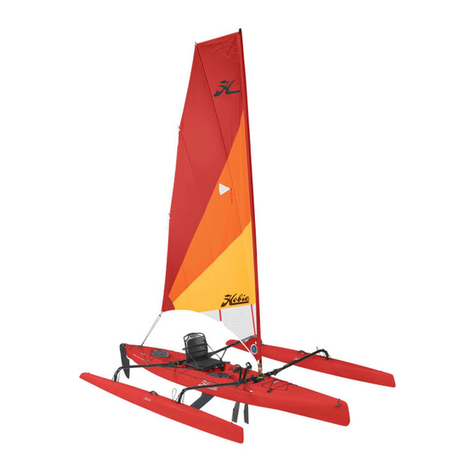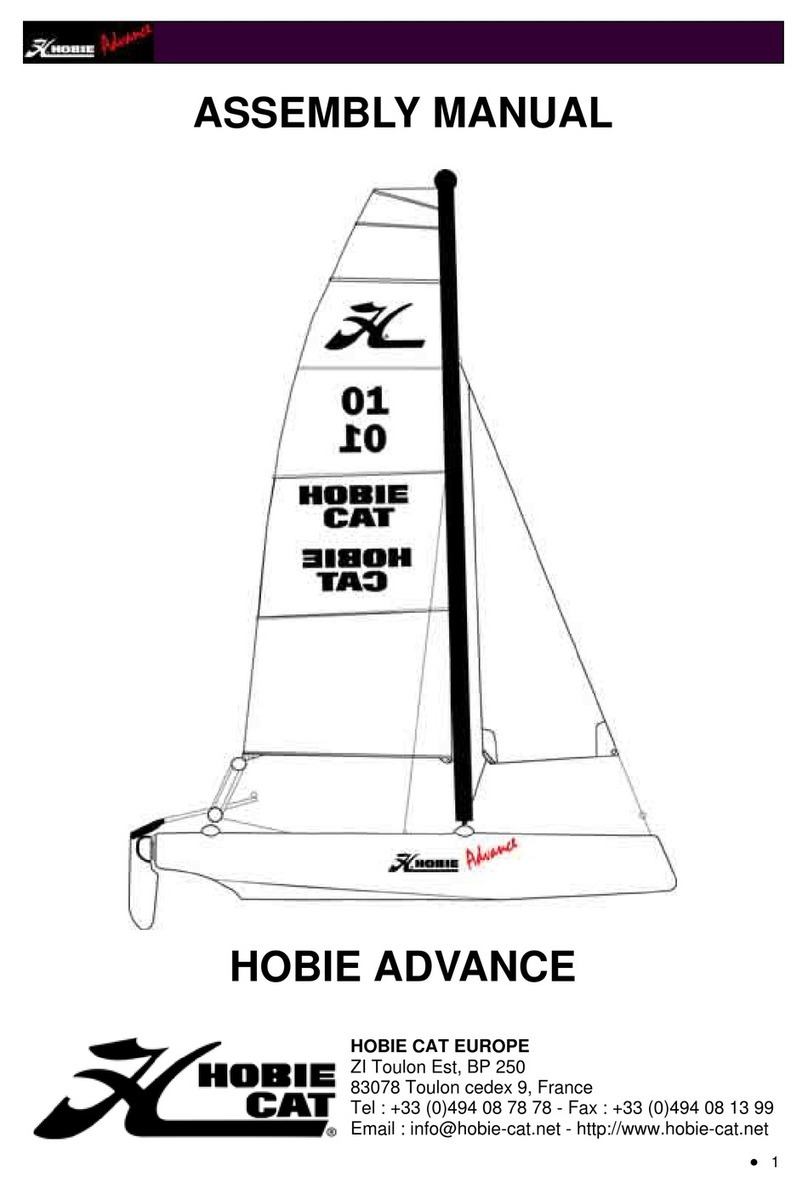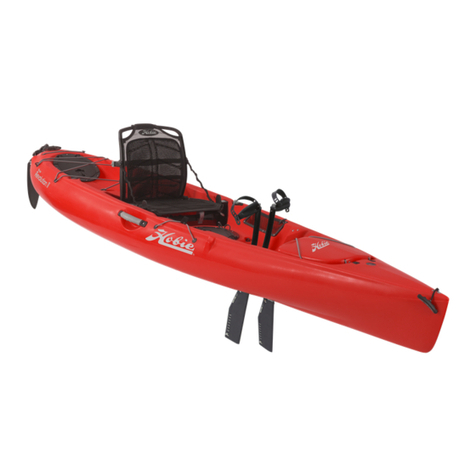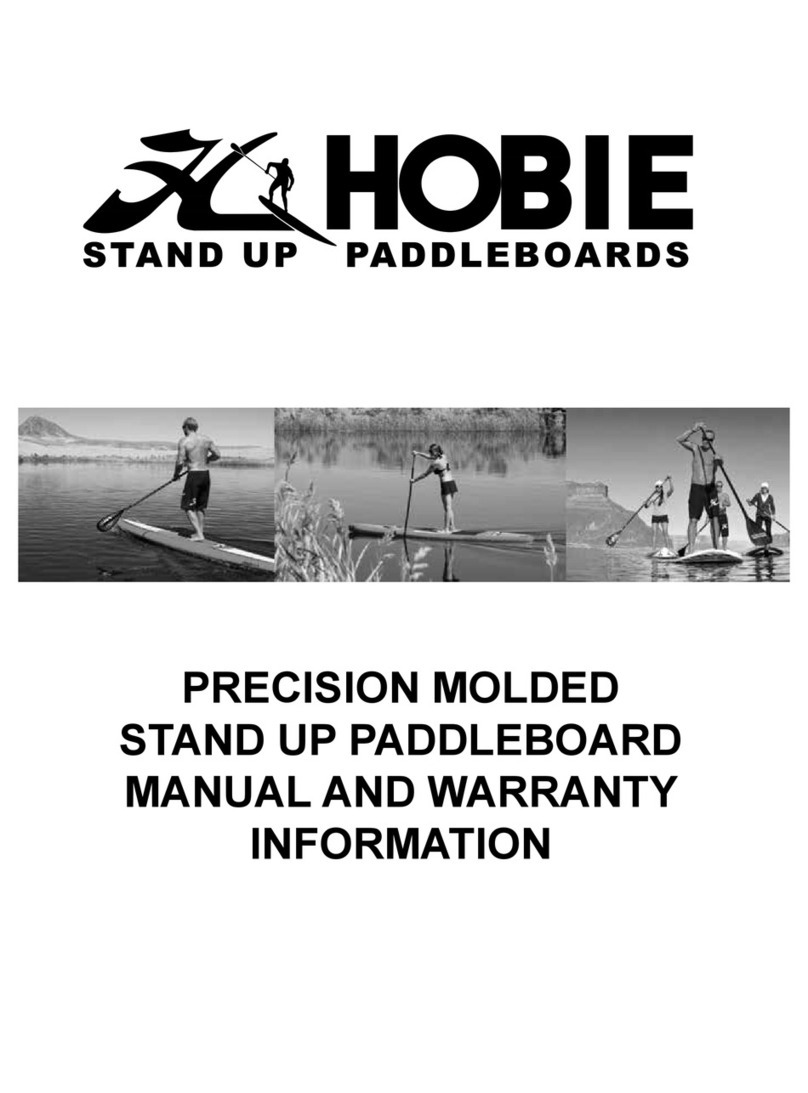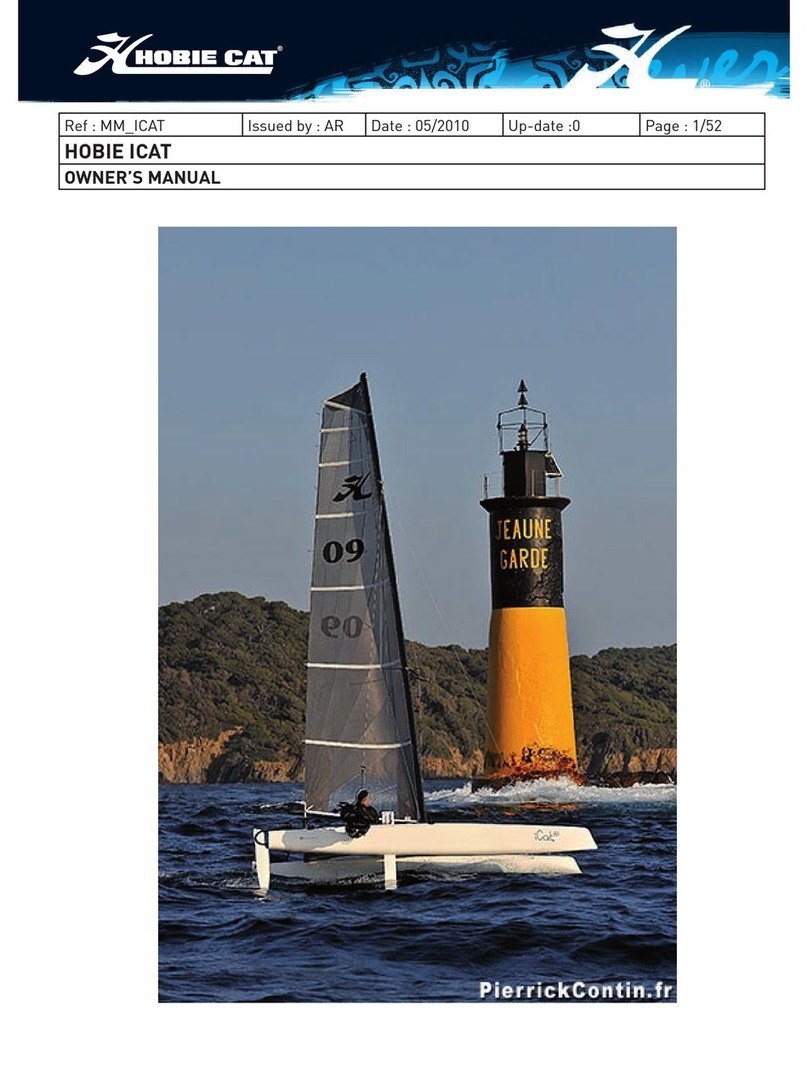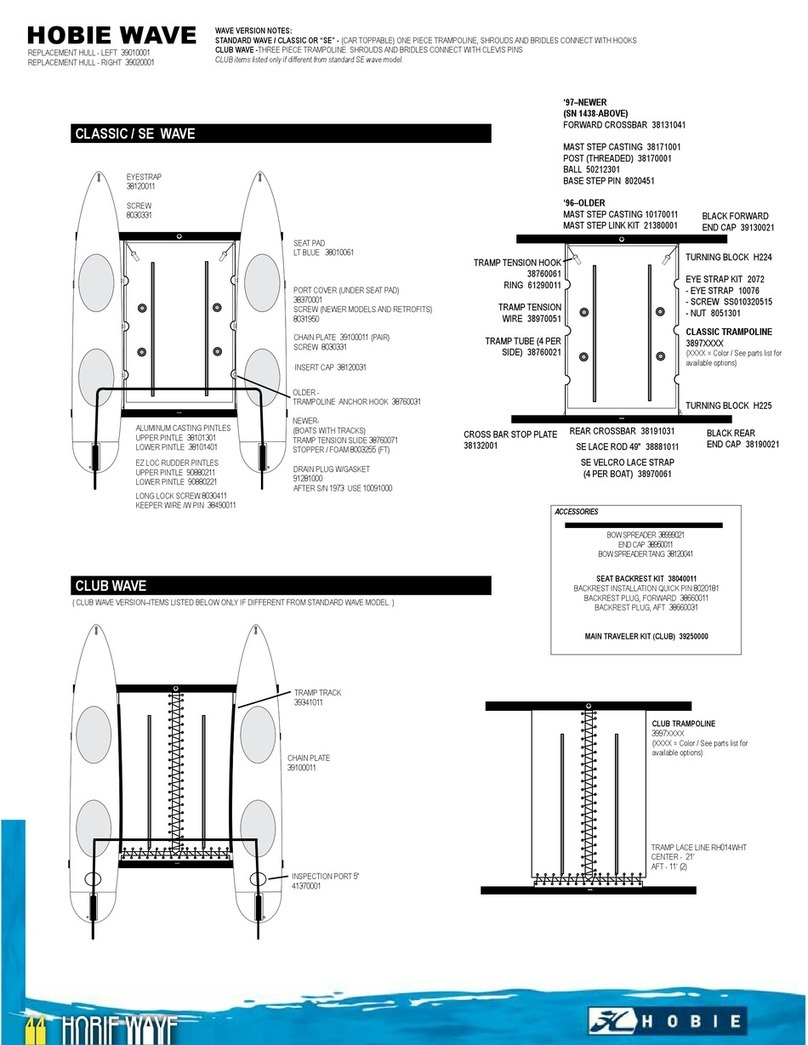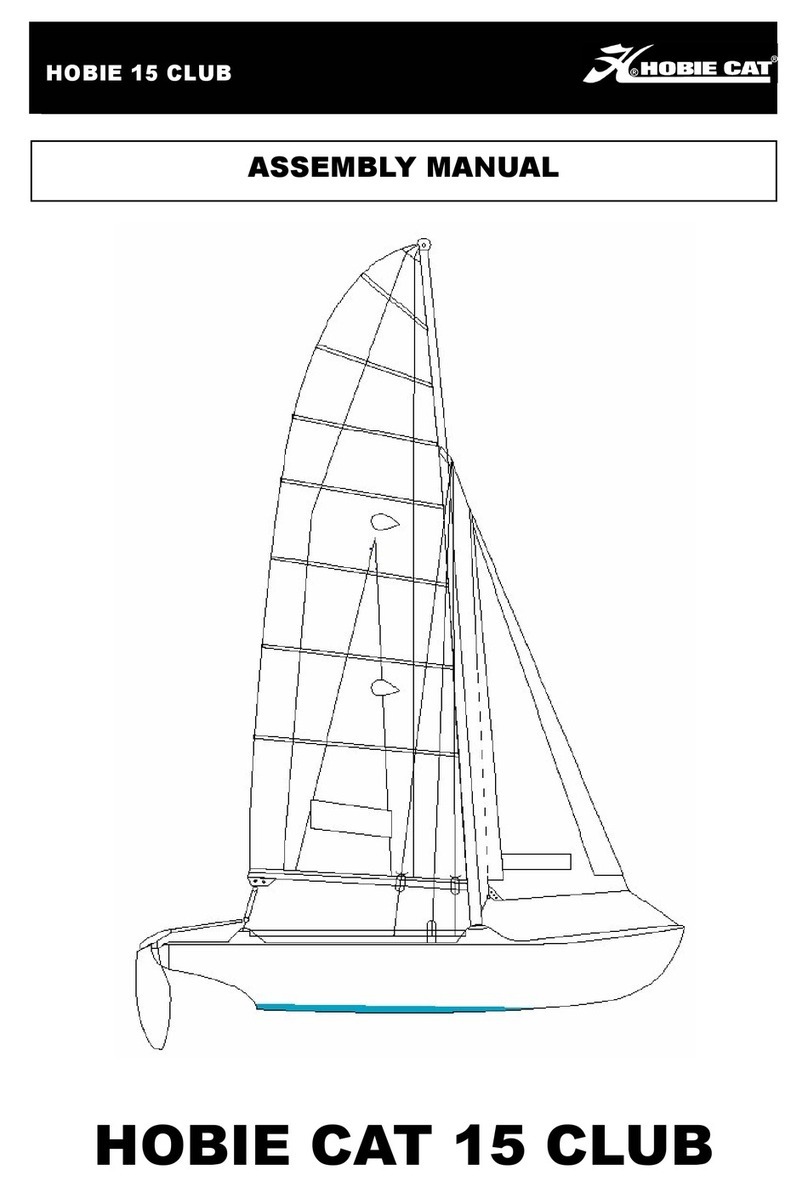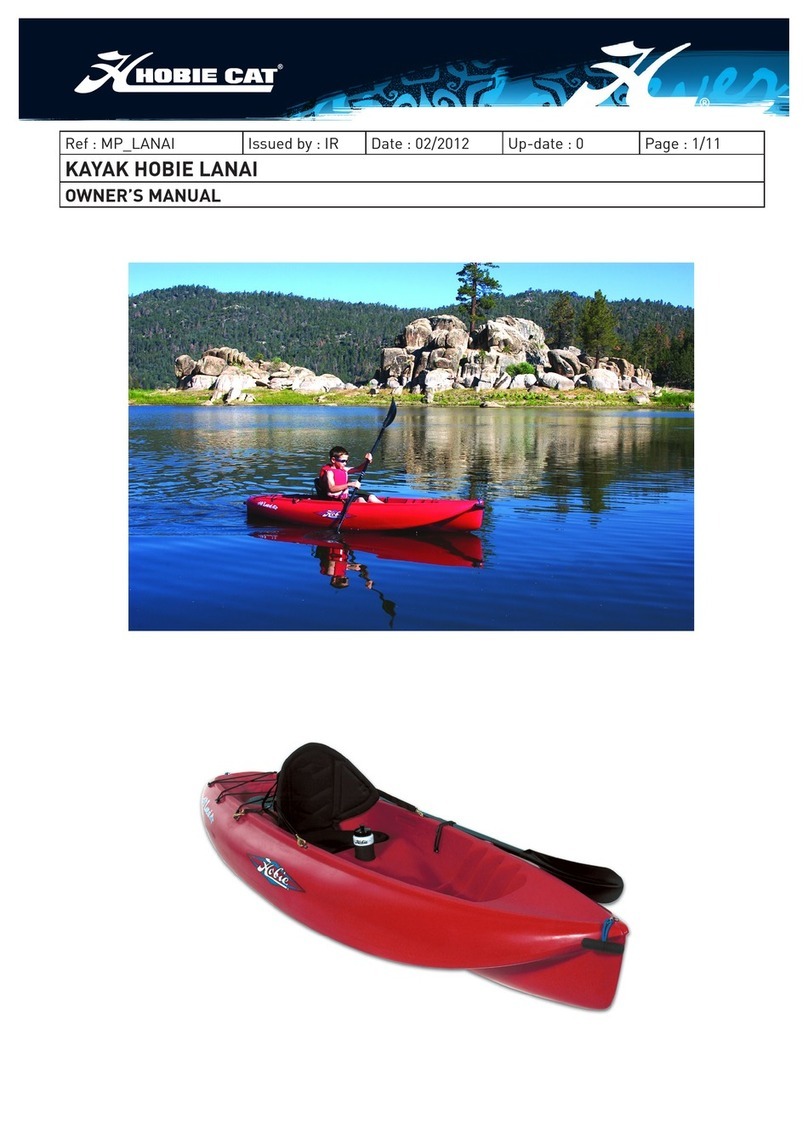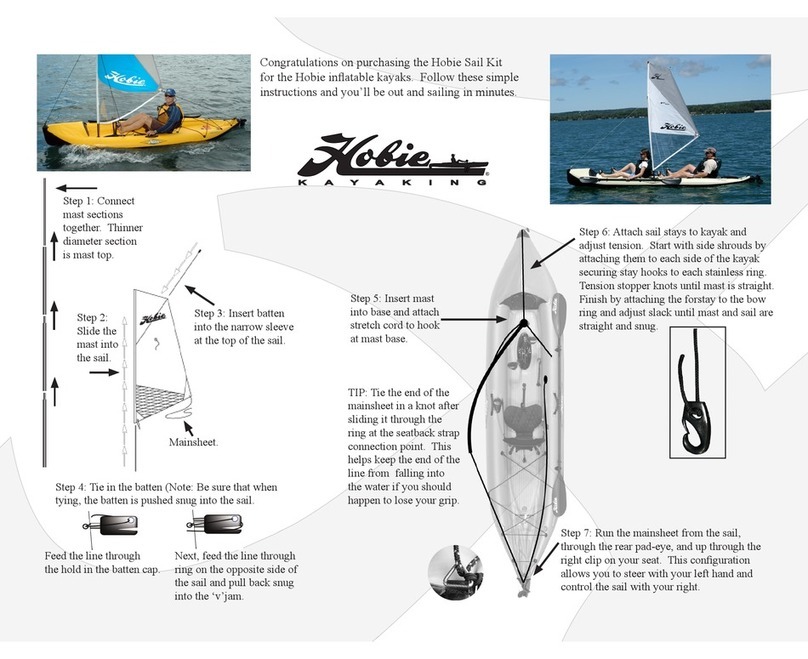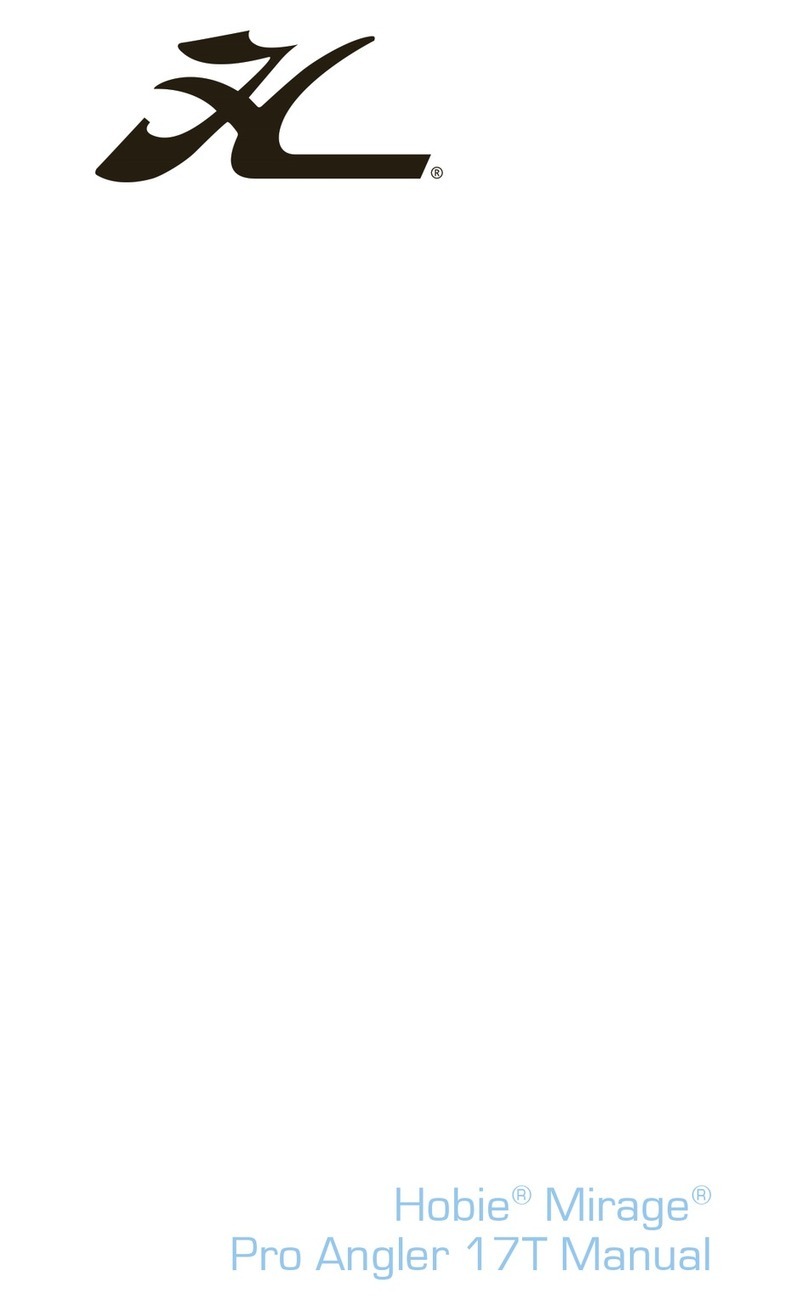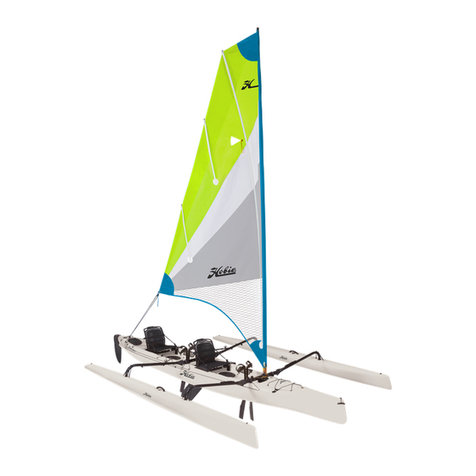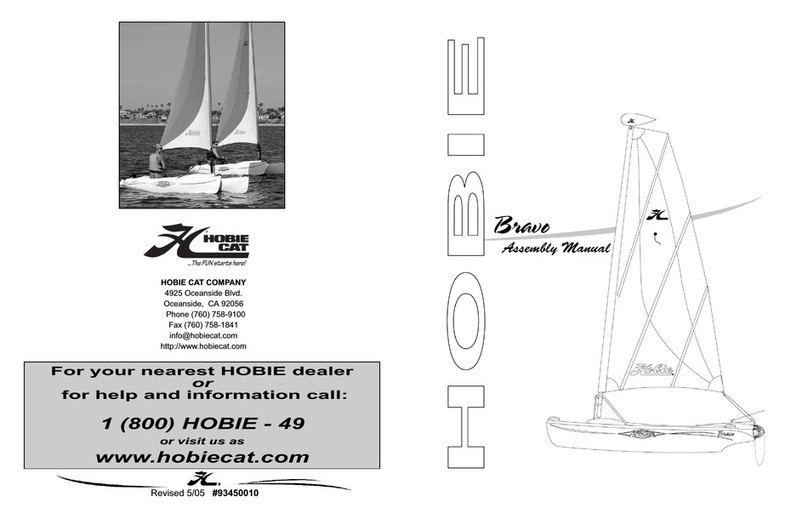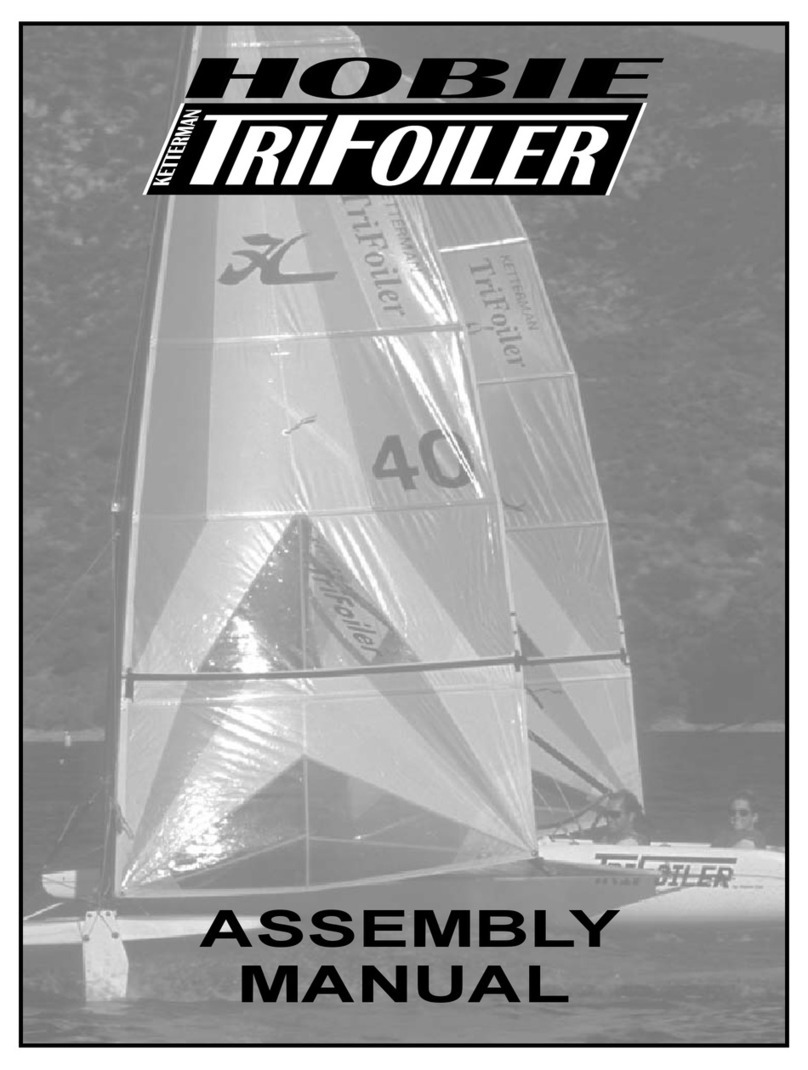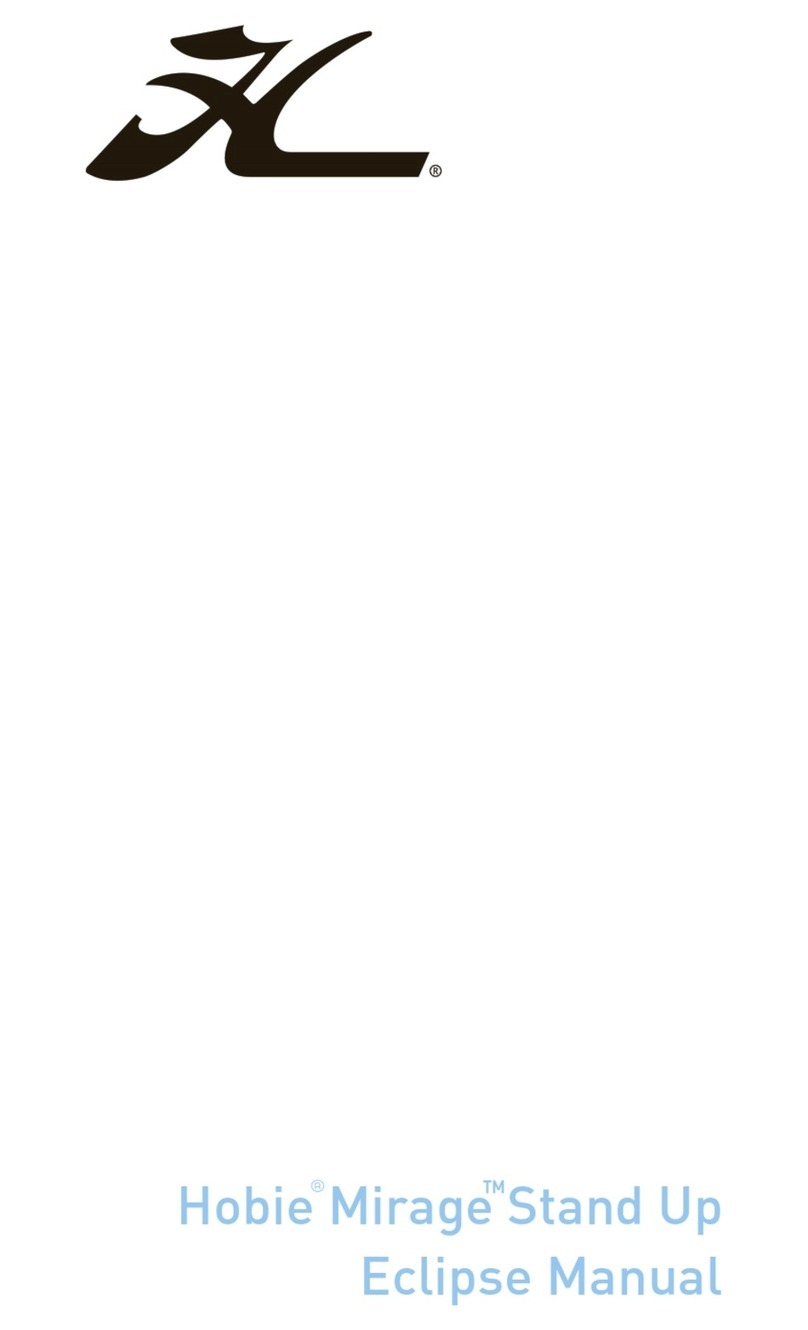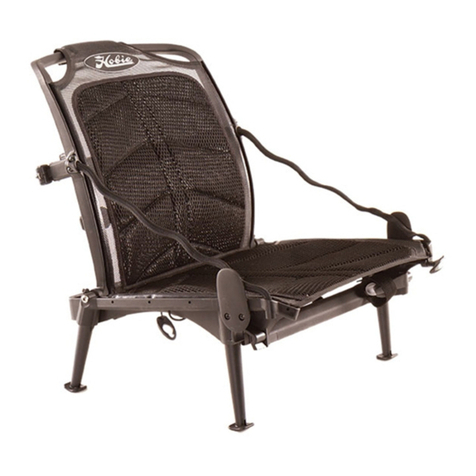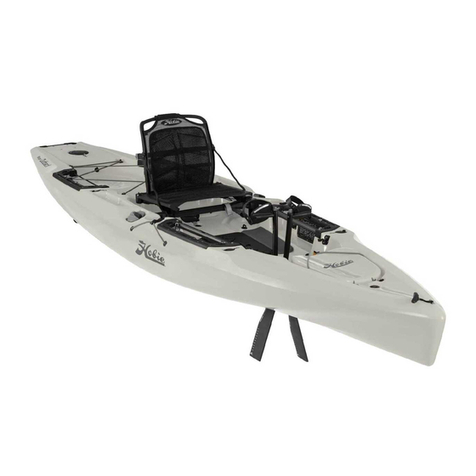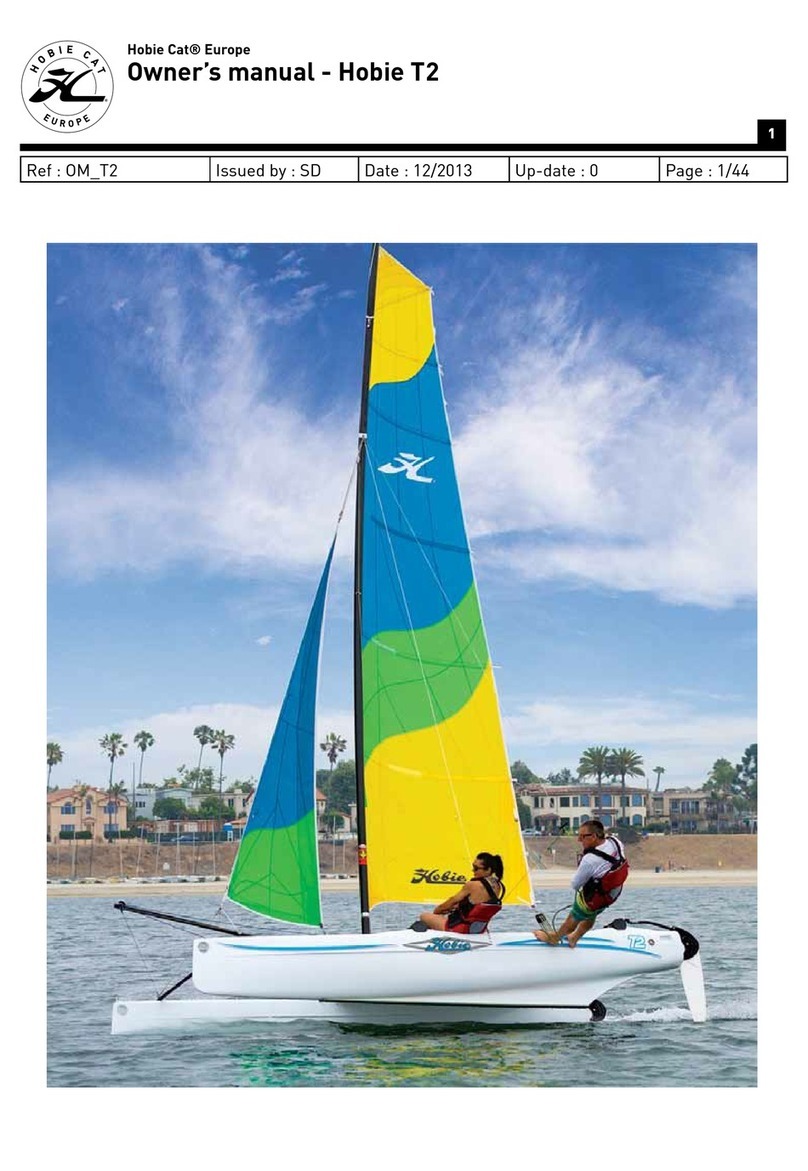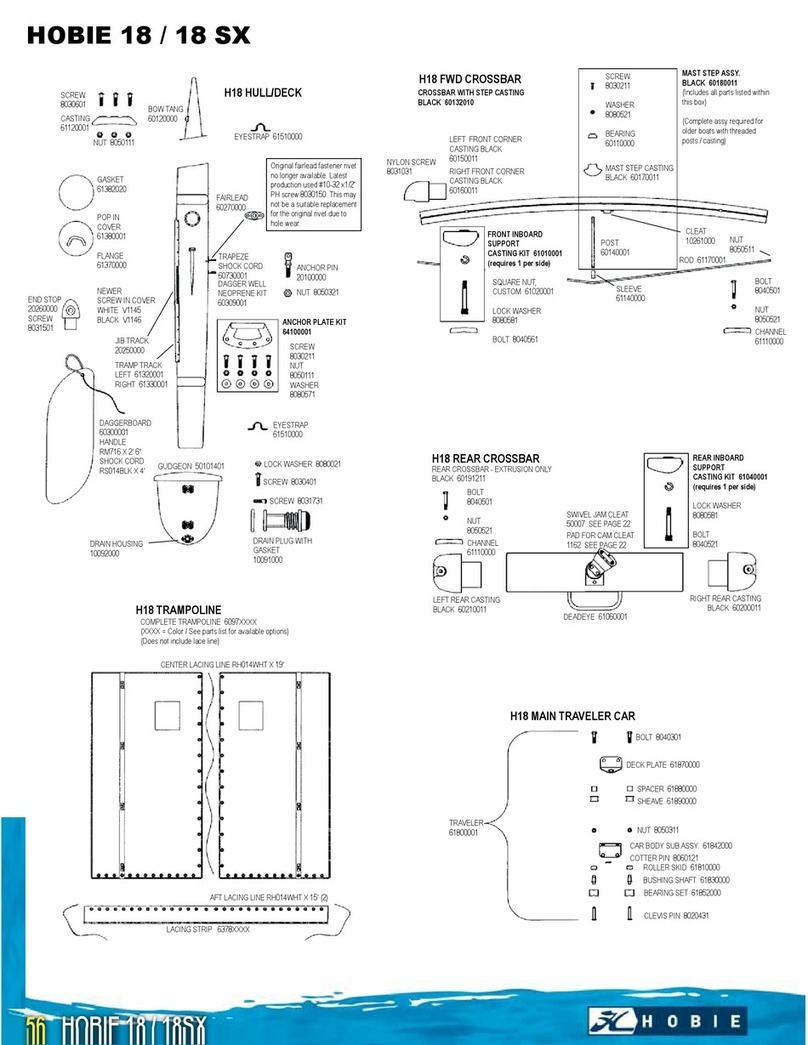STORING YOUR HOBIE KAYAK
Hobie has chosen a blend of plastic that has an added
measure of ultraviolet inhibitors to provide superior protection
from ultraviolet light. However, to ensure extra years of
flexibility and bright colors, avoid storing the boat in weather
or direct sunlight.
Kayaks should be stored on edge, upside down on the
cockpit rails, standing on end or hanging on its edges. When
hanging your kayak upside down, run straps around the boat
near the cockpit. A word of caution: hanging by the scupper
hole(s) may cause distortion; and hanging from the handles
may place undue strain on them. Storing the boat bottom side
down may also cause distortion. Kayak storage systems are
available from your dealer. Pad eyes are NOT intended for
hanging or for use as tie downs.
To secure your kayak, simply run a cable through a scupper
hole and lock it to something secure.
TRANSPORTING YOUR HOBIE KAYAK
One of the easiest ways to transport your Hobie kayak is to
purchase a roof rack from your dealer. This normally involves
a set of crossbars that attach to the car via the rain gutters or
adapter clips mounted to the door frame. They come with a
wide variety of attachments from kayak saddles to stackers.
The racks can be used without the attachments but the racks
should be padded. To help prevent distortion, place the
kayak, cockpit side down, on top of the rack. It is best if the
crossbars contact the cockpit sides and not the deck areas.
Straps can then be laid across the boat and tied to the bars.
Saddles cradle the boat and often come with their own
straps. Stackers allow multiple boats to be placed on their
sides without falling over.
An alternative to traditional rack systems are soft racks. They
tend to be less expensive and will work with most cars. These
are pads mounted on straps that sit between the kayak and
the roof of your car. Some styles have a strap that wraps
around the kayak and others strap the pad to the roof. To tie
the boat to the car, straps are run through the car doors and
the boat is tied to the roof as well as the bumpers, front and
rear. Over-tightening the straps may cause dents in the roof
of the car. Be sure to first consult your owners manual for the
car and roof rack system to ensure that you comply with all of
their recommendations, precautions and specifications.
A line run from the bow and stern of the boat to each
bumper is required. If your bumpers do not have a gap to
pass a rope around, look underneath. There should be a loop
of metal, which is used by car transports such as tow trucks.
Many people like to use the scupper holes to tie the boat to
the car. This helps prevent the boat from sliding back and
forth or the tie down rope from slipping off the kayak. This is
a perfectly acceptable method for tying the boat down.
RECOMMENDED EQUIPMENT FOR SPECIFIC
TYPES OF PEDALING AND PADDLING
Basic Boating: Life Jacket, Paddle, Paddle Leash, Backrest,
Safety Whistle, Filled Water Bottle, Appropriate Safety
Equipment.
Longer Distance Touring: Dry Bags, Chart, Compass.
Additional Equipment for Diving: Dive Flag, Anchor.
Fishing: Fishing Rod Holder, Drip Guards, Gear Bags, Knee
Braces.
ABOUT POLYETHYLENE
Continuing Hobies tradition of offering the latest in
technology at an affordable price, your new kayak is made of
rotomolded super linear polyethylene. Polyethylene offers a
major advantage because it is virtually indestructible under
normal use. Being somewhat flexible, it gives on impact and
derives its stiffness from compound curves. Polyethylene is
very abrasion-resistant.
FREQUENTLY ASKED QUESTIONS (FAQ)
How watertight is my boat?
It is normal for any type of kayak to experience a small
amount of seepage due to the installation of rivets, hatches,
etc. Kayaks may take on a few cups of water while out
paddling. If a kayak is taking on more than a small amount of
water, check to make sure the drain plug is in, then check the
rest of the boat for leaks. Silicone can be used to seal the
rivets. If you have any questions, please call your dealer.
How should I store my kayak?
It is best to store your kayak on edge, upside down, standing
on end, or hanging on its edges.
Is my boat repairable?
Hobie kayaks are very durable, however, on occasion they
may need some minor repairs. Linear polyethylene is
repairable. Check with your dealer concerning repairs for
your kayak.
Is my boat recyclable?
Hobie will recycle your boat when you are done with it. To
recycle a Hobie Kayak, it must be cut up so it fits in a box with
the following dimensions: may not exceed 130 for the length
plus girth, and 108 for the height. Ship the boat to: Hobie
Cat 4925 Oceanside Blvd. Oceanside, CA 92056.
It is our hope that no Hobie Kayak will ever end up in
a landfill!
7
